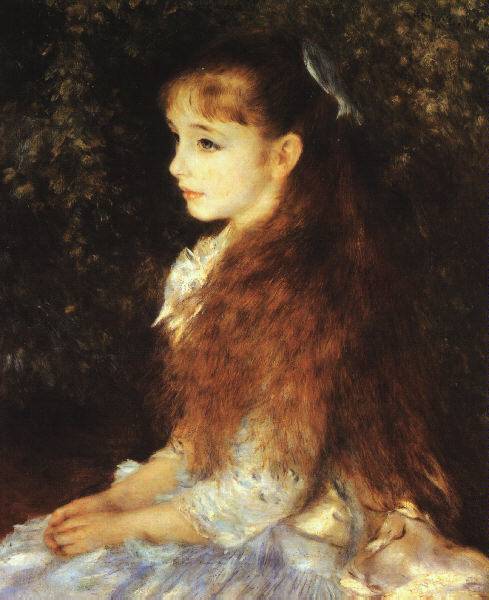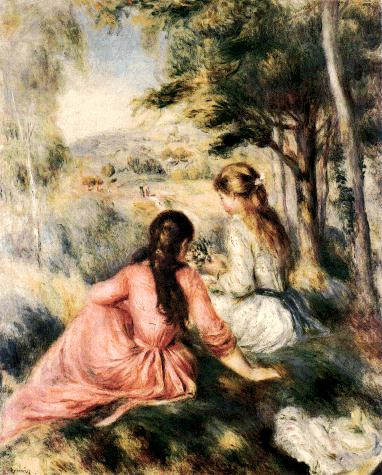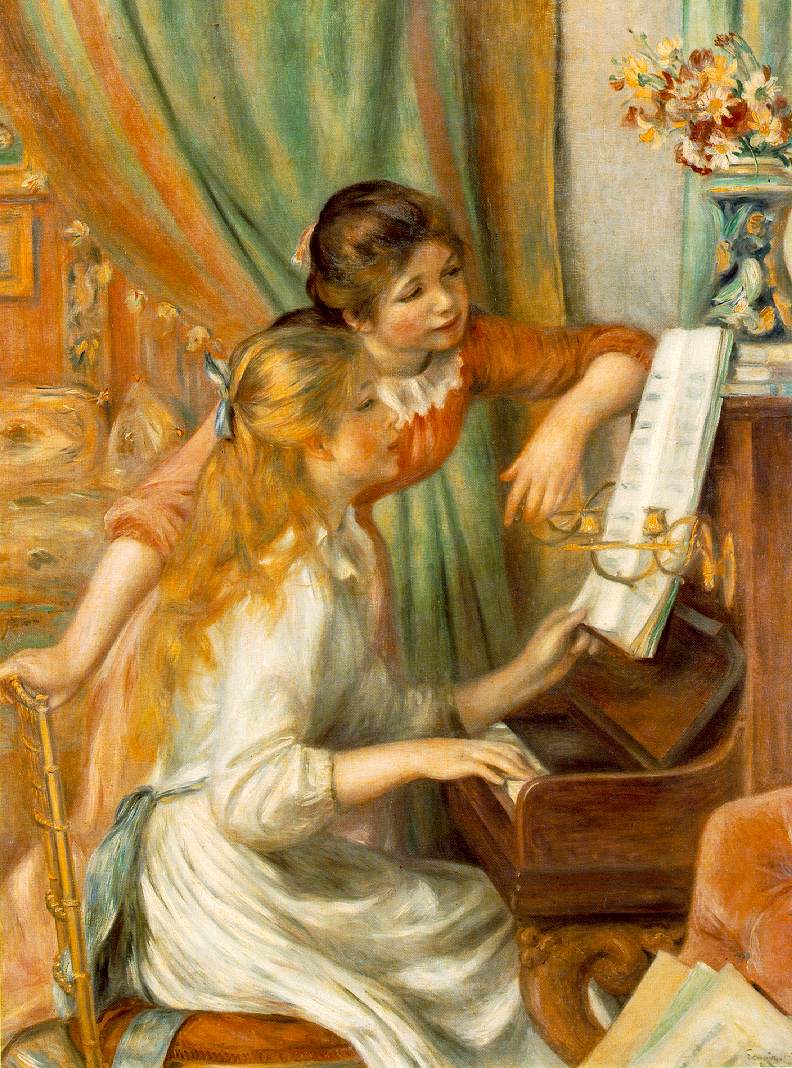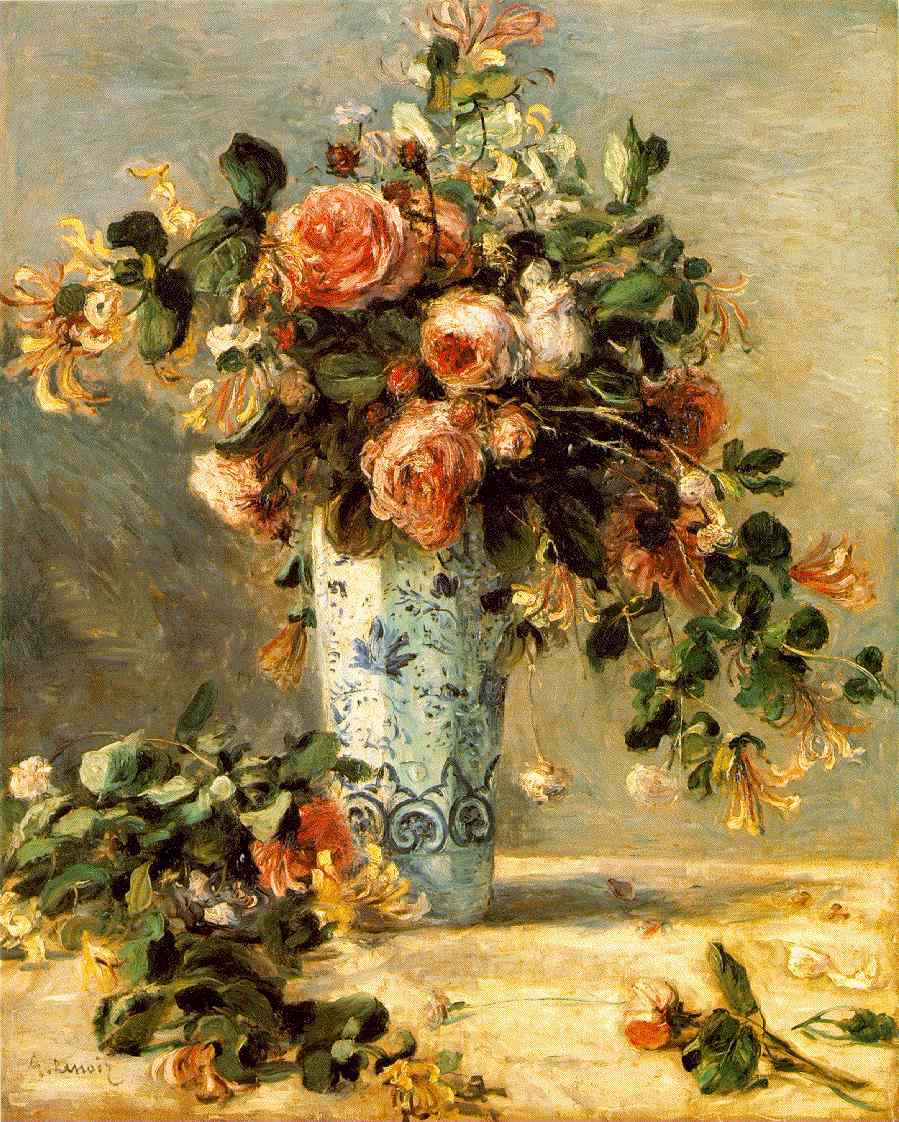縱橫天下我笑傲
笑傲江湖 逍遙自在
Renoir, Pierre-Auguste 的故事
Renoir, Pierre-Auguste,在1915年後,開始癱瘓,在畫室裏,把畫布紮在轉動的布架上,雖然身子不能動,也能做巨幅油畫。他的風癱很嚴重,經常痛苦萬分,嚴重時連伸手去蘸鬆節油,都無法把手縮回來。。。
目前收藏在羅浮宮博物館的戲水美人,就Renoir是在堅忍之下,與癱瘓搏鬥中畫出來的。。。
有一天,他在臥室裏,請人把畫具送來,對著一瓶秋海棠寫生。花是在花圃現采的。他一連畫了幾個鍾頭,心神完全灌注在秋海棠上,忘了身體的疼痛。最後他做了個手勢。叫人把畫筆接了過去。他輕聲的說了句話:“我想我現在畢竟稍微明白繪畫的訣竅了。。。”
就在那天晚上,他於世長辭。
隻有懂得堅忍精進的人,能夠忘懷周遭的逆境,不斷的努力,在不懈怠中,讓自己從有限解脫到無限的境地。。。
看到這裏,淚水滴落下來。。。





Pierre-Auguste Renoir
French painter originally associated with the Impressionist movement. His early works were typically Impressionist snapshots of real life, full of sparkling colour and light. By the mid-1880s, however, he had broken with the movement to apply a more disciplined, formal technique to portraits and figure paintings, particularly of women (e.g. , Bathers, 1884-87).
In 1854 he began work as a painter in a porcelain factory in Paris, gaining experience with the light, fresh colors that were to distinguish his Impressionist work and also learning the importance of good craftsmanship. His predilection towards light-hearted themes was also influenced by the great Rococco masters, whose works he studied in the Louvre. In 1862 he entered the studio of Gleyre and there formed a lasting friendship with Monet, Sisley, and Bazille. He painted with them in the Barbizon district and became a leading member of the group of Impressionists who met at the Café Guerbois. His relationship with Monet was particularly close at this time, and their paintings of the beauty spot called La Grenouillère done in 1869 (an example by Renoir is in the Nationalmuseum, Stockholm) are regarded as the classic early statements of the Impressionist style. Like Monet, Renoir endured much hardship early in his career, but he began to achieve success as a portraitist in the late 1870s and was freed from financial worries after the dealer Paul Durand-Ruel began buying his work regularly in 1881. By this time Renoir had 'travelled as far as Impressionism could take me', and a visit to Italy in 1881-82 inspired him to seek a greater sense of solidarity in his work. The change in attitude is seen in The Umbrellas (NG, London), which was evidently begun before the visit to Italy and finished afterwards; the two little girls on the right are painted with the feathery brush-strokes characteristic of his Impressionist manner, but the figures on the left are done in a crisper and drier style, with duller coloring. After a period of experimentation with what he called his `manière aigre' (harsh or sour manner) in the mid 1880s, he developed a softer and more supple kind of handling. At the same time he turned from contemporary themes to more timeless subjects, particularly nudes, but also pictures of young girls in unspecific settings. As his style became grander and simpler he also took up mythological subjects (The Judgement of Paris; Hiroshima Museum of Art; 1913-14), and the female type he preferred became more mature and ample. In the 1890s Renoir began to suffer from rheumatism, and from 1903 (by which time he was world-famous) he lived in the warmth of the south of France. The rheumatism eventually crippled him (by 1912 he was confined to a wheelchair), but he continued to paint until the end of his life, and in his last years he also took up sculpture, directing assistants (usually Richard Guino, a pupil of Maillol) to act as his hands (Venus Victorious; Tate, London; 1914).
Renois is perhaps the best-loved of all the Impressionists, for his subjects---pretty children, flowers, beautiful scenes, above all lovely women---have instant appeal, and he communicated the joy he took in them with great directness. `Why shouldn't art be pretty?', he said, `There are enough unpleasant things in the world.' He was one of the great worshippers of the female form, and he said `I never think I have finished a nude until I think I could pinch it.' One of his sons was the celebrated film director Jean Renoir (1894-1979), who wrote a lively and touching biography (Renoir, My Father) in 1962.




